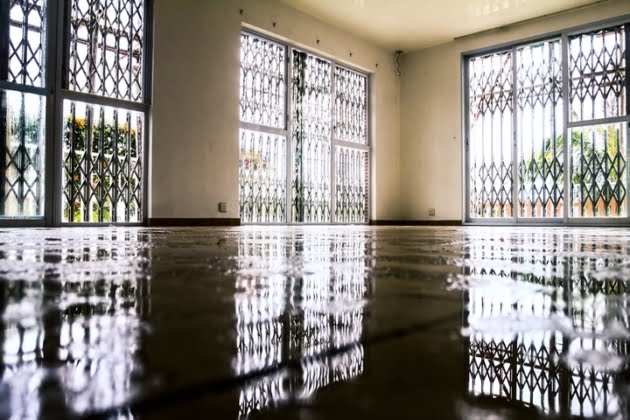During the cold winter season, the ground experiences continuous thawing and freezing patterns, which leads to gaps springing up around your property. Water can seep into the basement through these cracks. Once enough water accumulates around the foundation, it makes the basements soggy. If the problem becomes severe enough, you may encounter a full-blown basement leakage hazard in your household.
For any basement leaking in winter, the problem usually stems from runoff, condensation, or subsurface seepage. Basement leaks are best dealt with during winter rather than the spring season. When the temperatures do get warmer, there will be additional water coming in from the melting snow and the spring rainfall, which further complicates the leakage.
If you have a basement leaking in winter, call a plumber for a consultation. In addition, you may find these following tips helpful for fixing the problem:
Tip #1: Check the exterior drainage systems.
Before all else, you should establish how water is getting into your basement. Conduct a thorough inspection, starting from outside the house. Ensure all your house gutters, downspouts and other drainage systems are effectively diverting water away from your home. If not, adjust these systems to ensure they direct water away from the property.
Regular maintenance is paramount to ensuring your drainage systems function properly during winter. Always make a habit of cleaning the downspouts and gutters regularly.
Tip #2: Check the basement windows.
During your inspection, you should also check the basement windows for any problems. The basement windows should have a watertight steal and must be situated above the ground-level to combat basement leaks. This positioning helps to deal with avoidable basement waterproofing issues.
Tip #3: Determine the most suitable waterproofing system.
Your inspection may reveal that the leakage comes from cracks on walls, improper backfilling during construction, movement in the foundation walls, deteriorated sewer lines, or clogged footer drains. There could also be other causes for a basement leaking in winter, which a professional plumber can help you identify.
Each basement leakage situation is unique, so you will need to apply a suitable waterproofing technique for your household. Since most basement leaks are the result of multiple problems, there is usually no one-size-fits-all solution to fix the problem.
Tip #4: Waterproof the basement by crack injections.
The water may be coming in from the many holes, cracks and gaps on your walls. As such, you can waterproof the leaking basement by filling up these cracks. Injecting polyurethane or epoxy materials into a crack will temporarily fix the water leak. This repair technique is best suited for wall leakages from concrete foundations. However, it is not appropriate for surfaces constructed with stone, bricks or cinder blocks.
Tip #5: Waterproof the basement with paints and primers.
This approach involves using paints or priming products to waterproof the basement. However, this is mostly a cosmetic method and not recommended as a long-term solution. It works by sealing the basement wall to give you short-term relief. This method will not be able to address the primary leakage source.
Tip #6: Waterproof the basement by exterior excavation.
This approach involves doing excavation next to the foundation wall, allowing you to correct the drainage with a new system or new tiles. You can also apply a waterproof membrane on the external wall’s surface, which ensures the water won’t infiltrate the wall again. The excavation may involve one or multiple walls along the foundation.
This waterproofing method is a permanent solution since it addresses the source of the leak. However, it is a costly waterproofing technique and may disrupt your property, especially with your driveway, porches and landscaping.
Tip #7: Waterproof the basement by interior excavation.
Also known as negative side waterproofing, this technique is generally considered the least invasive. It addresses the hydrostatic pressure and deals with the water after it has infiltrated the basement. This method works by excavating little trenches within the basement perimeter. Then, drainage titles and piping are installed to route water from the seepage areas into the sump pump system.
Tip #8: Waterproof the basement by underpinning.
This method requires excavating parts of the foundation wall into the desired depth underneath the current foundation wall. It involves placing fresh concrete under the pre-existing foundation. This extends the size of the basement. Depending on the area affected, this waterproofing method can be a significant financial investment.
To determine the best waterproofing technique for your household, you should get a professional evaluation of your situation. The assessment should factor both the exterior and the interior of the building. With the expert advice, you will know how to waterproof the leaking basement and avoid paying more than you should.





